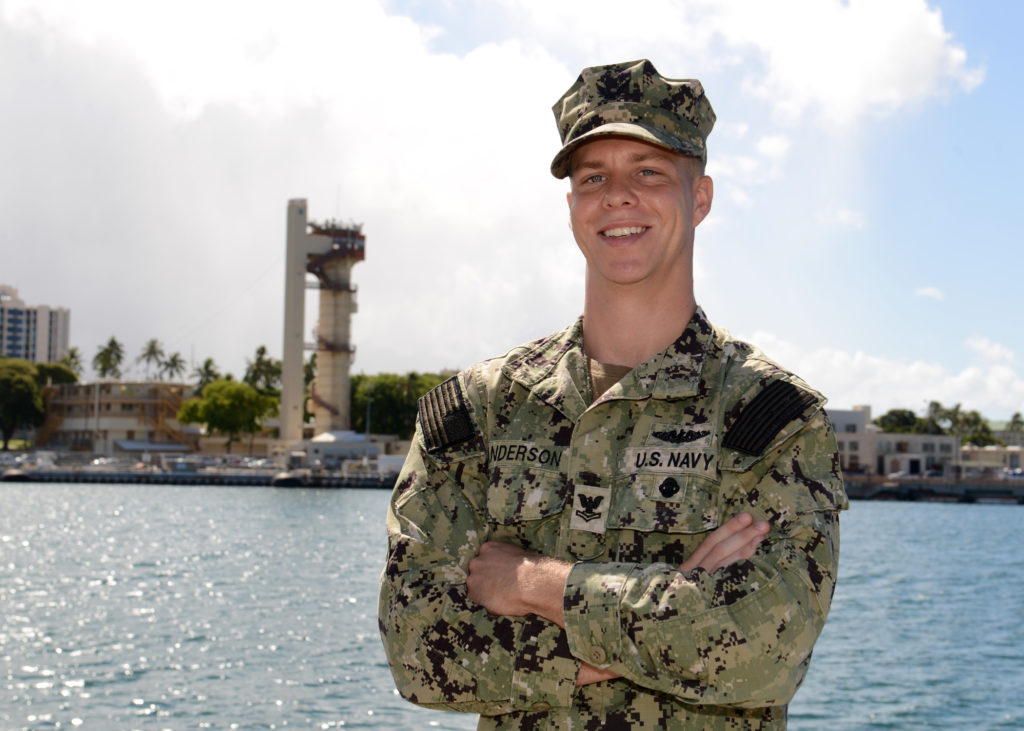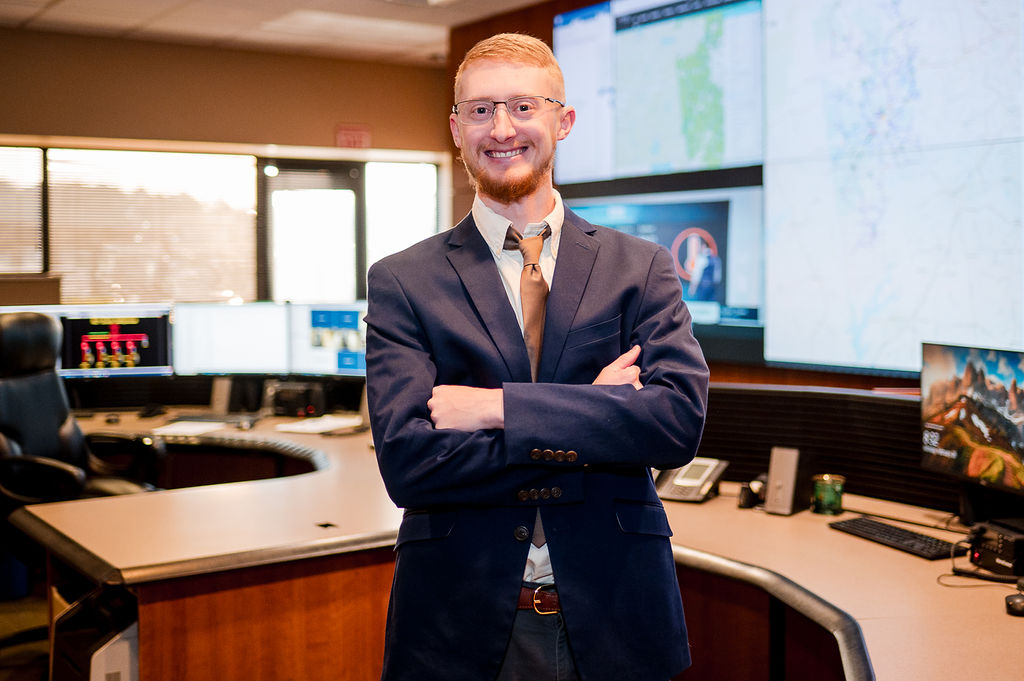
Modern attack submarines are the most technologically advanced and capable undersea warfighters in the world. Operating these highly complex submarines require sailors from the U.S. Navy’s submarine community, also known as the ‘Silent Service.’
Petty Officer 2nd Class Parker Bethel Anderson, a 2012 Newnan High School graduate and native of Newnan, Georgia, works as a Navy yeoman serving aboard USS Chicago, one of the world’s most advanced nuclear-powered submarines, homeported at Joint Base Pearl Harbor-Hickam, Hawaii.
Anderson credits success in the Navy to many of the lessons learned in Newnan.
“My hometown taught me the value of hard work,” said Anderson. “I took that lesson with me and apply it every day while I serve.”
As a Navy yeoman, diver and sonar technician, Anderson is responsible for the administrative and personnel tasking, diving operations and the safety of the ship through sound navigation and ranging techniques.
Jobs are highly varied aboard the submarine. Approximately 130 sailors make up the submarine’s crew, doing everything from handling weapons to maintaining nuclear reactors.
Attack submarines are designed to hunt down and destroy enemy submarines and surface ships; strike targets ashore with cruise missiles; carry and deliver Navy SEALs; carry out intelligence, surveillance, and reconnaissance missions; and engage in mine warfare. Their primary tactical advantage is stealth, operating undetected under the sea for long periods of time.
Because of the demanding environment aboard submarines, personnel are accepted only after rigorous testing and observation. Submariners are some of the most highly trained and skilled people in the Navy. Regardless of their specialty, everyone has to learn how everything on the ship works and how to respond in emergencies to become “qualified in submarines” and earn the right to wear the coveted gold or silver dolphins on their uniform.
Though there are many ways for sailors to earn distinction in their command, community, and career, Anderson is most proud of becoming a submarine diver.
“I’m mostly proud of the honor of becoming a submarine diver as it is a combination of being qualified in the most challenging and demanding fields, both mentally and physically in the military,” said Anderson.
Being stationed in Pearl Harbor, often referred to as the gateway to the Pacific in defense circles, means Anderson is serving in a part of the world taking on a new importance in America’s focus on rebuilding military readiness, strengthening alliances, and reforming business practices in support of the National Defense Strategy.
“Our priorities center on people, capabilities and processes, and will be achieved by our focus on speed, value, results and partnerships,” said Secretary of the Navy Richard V. Spencer. “Readiness, lethality and modernization are the requirements driving these priorities.”
The Navy has been pivotal in helping maintain peace and stability in the Pacific region for decades. The Pacific is home to more than 50 percent of the world’s population, many of the world’s largest and smallest economies, several of the world’s largest militaries, and many U.S. allies.
The U.S. Pacific Fleet is the world’s largest fleet command, encompassing 100 million square miles, nearly half the Earth’s surface, from Antarctica to the Arctic Circle and from the West Coast of the United States into the Indian Ocean.
As a member of one of the U.S. Navy’s most relied upon assets, Anderson and other sailors know they are part of a legacy that will last beyond their lifetimes, one that will provide a critical component of the Navy the nation needs.
“The Navy has given me more than I could ever return,” added Anderson. “It has shown me the world, let me experience the most advanced weapons systems known to man, as well as given me the initiative and motivation to accomplish any task set before me.”





